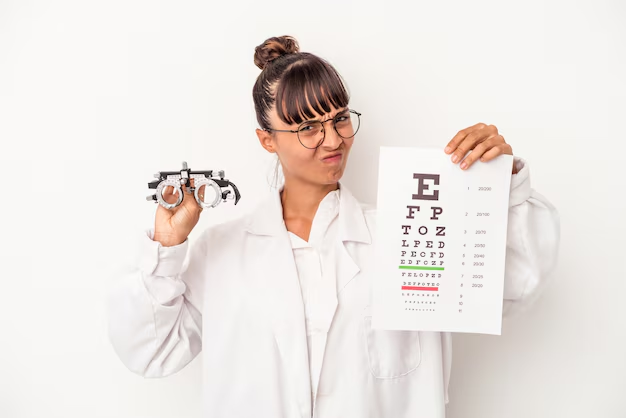How to Recognize Signs of Cataracts: A Comprehensive Guide
Imagine walking down the street and feeling as if a thin veil has blurred the clarity of everything around you. It's a gradual sensation, and you might not even notice it at first. This subtle change in vision could be due to cataracts. Understanding cataracts and how to identify their presence is crucial for maintaining your eye health. Below, we explore the ins and outs of cataracts, equipping you with the knowledge to identify possible symptoms.
What Are Cataracts?
Cataracts occur when the lens of your eye becomes cloudy, leading to impaired vision over time. Think of the lens as a camera lens, focusing light onto the retina for clear vision. A clouded lens can disrupt this process, similar to looking through a foggy window.
Causes of Cataracts
Several factors contribute to the development of cataracts:
- Aging: The most common cause, where changes in the lens' proteins result in clouding.
- Genetics: Family history can play a significant role.
- Diabetes: High sugar levels can alter the lens proteins.
- Excessive Sun Exposure: UV rays can damage your eye lenses.
- Lifestyle Factors: Smoking or excessive alcohol intake can heighten the risk.
Recognizing the Symptoms
Spotting the early signs of cataracts can help manage vision better. Here are some key indicators:
Blurred Vision
One of the earliest signs of cataracts is blurry vision. It might start as minor nearsightedness but gradually worsen.
Glare Sensitivity
Experiencing discomfort from bright lights or excessive glare might indicate cataracts. This is particularly noticeable when driving at night or in bright sunlight.
Halos Around Lights
You might notice rings or halos around streetlights or headlights, which can be distracting and affect nighttime vision.
Double Vision in One Eye
It's not uncommon to experience double vision or ghost images in the affected eye, even when the other eye is covered.
Frequent Prescription Changes
Continually needing stronger eyeglasses or contact lenses can signify a cataract problem.
How Are Cataracts Diagnosed?
Recognizing symptoms is a start, but professional diagnosis is crucial.
Eye Examination
During an eye exam, an optometrist or ophthalmologist can detect signs of cataracts by inspecting the eye's structures.
Slit-lamp Examination
This detailed method allows doctors to examine the eye's front structures with precision, highlighting any abnormalities in the lens.
Retinal Exam
Dilation drops help in examining the retina at the back of the eye, providing insight into the eye's health.
Understanding the Types of Cataracts
Cataracts can vary, and understanding their types can improve self-awareness.
Nuclear Cataracts
These develop in the central part of the lens. Initially, they might improve near vision, but eventually, impairment increases, especially affecting distance vision.
Cortical Cataracts
These feature white, wedge-like opacities starting at the lens's edge. They progress inward, affecting the perception of contrast.
Posterior Subcapsular Cataracts
These begin at the back of the lens and can rapidly affect vision. You're likely to notice difficulty reading and see glare from lights.
Lifestyle Adjustments to Manage Cataracts
Cataracts can often be managed with some lifestyle adjustments, reducing their progression's impact.
Nutritional Adjustments
- Antioxidants: Foods rich in antioxidants, like fruits and green leafy vegetables, may promote lens health.
- Omega-3 Fatty Acids: Found in fish, these can support eye health.
Protective Eyewear
Wearing quality sunglasses that block UV rays can protect eyes from potential damage.
Smoking Cessation
Quitting smoking can decrease the potential for the worsening of cataracts or developing them.
Regular Eye Check-ups
Schedule regular eye exams to monitor changes in vision or eye health.
Treatment Options for Cataracts
While lifestyle changes help manage early symptoms, surgery might be necessary for advanced cases.
Cataract Surgery
This is a common procedure where the cloudy lens is replaced with a clear artificial one. It's generally safe and effective, significantly improving vision quality.
Post-Surgery Care
Following surgery, care includes avoiding strenuous activities and protecting eyes from potential strain or injury.
Tips for Living with Cataracts
Once diagnosed, certain adjustments can enhance visual comfort.
Improved Lighting
Ensure your living space is well-lit to ease activities like reading or cooking.
Magnifying Tools
Utilizing magnifying glasses or increased font sizes on digital screens can alleviate strain.
Contrast Enhancements
Selecting larger prints with high contrast can ease reading efforts.
Visual Summaries for Effective Management 🌟
- 🔍 Early Detection: Report suspicion of cataracts early to your eye doctor.
- 🍎 Diet Improvement: Incorporate antioxidants and omega-3s to bolster eye health.
- 😎 Protect Your Eyes: Wear sunglasses to shield your eyes from UV exposure.
- 🏥 Routine Exams: Keep up with regular eye examinations for early intervention.
- 👓 Post-Surgery Care: Follow post-operative guidelines to maximize vision recovery.
Understanding and identifying the signs of cataracts empower you to take proactive steps towards preserving your vision. When managed effectively, cataracts don't have to impede your lifestyle. Stay vigilant, consult professionals regularly, and make informed choices to safeguard your eye health.
